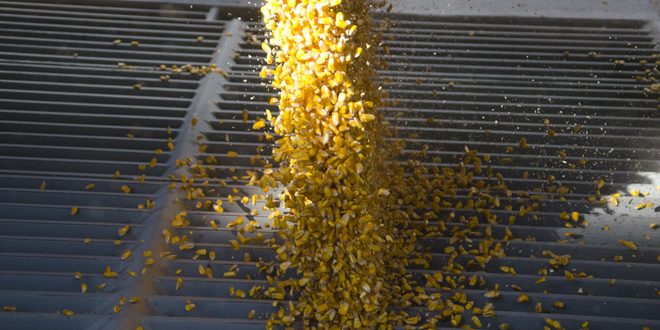U.S. corn exports have been a roller coaster in recent years. During the 2020/21 marketing year,...
Who’s Buying? A Look at U.S. Corn Exports

It’s no secret that China’s been buying significantly fewer bushels of U.S. corn. Despite that setback, U.S. corn exports during the 2023/24 marketing years are projected to be 439 million bushels higher (+26%) than last marketing year (Figure 1), according to USDA. Last December, Mexico returned to buying U.S. corn after the near-miss GMO trade dispute, but the question is, “Who’s buying U.S. corn?”
Total Activity
Higher exports is good news as the crop approaches an ending stock-to-use ratio of nearly 15%. While improved, 2023/24 expectations aren’t exactly breakneck as exports are 647 million bushels (23%) behind 2020/21, when exports exceeded 2.7b bushels.
Figure 1 also reminds us of how volatile export markets can be. Activity surged from 1.8b during 2019/20 to 2.7b by 2020/21. But two years later, exports would again fall below 1.7b.

Figure 1. Annual U.S. Corn Exports, 2015/16 to 2023/24. Data Source: USDA
Of course, the 2023/24 data are projections as the marketing year is about half complete. Figure 2 shows reported corn exports for the first five months of each marketing year since 2015/16. These data confirm the upturn as current activity is 33% ahead of a year ago. Also worth noting is that the pace of exports has been faster on four occasions, and slower on four occasions. In other words, the 2023/24 activity hasn’t been too hot or too cold.

Figure 2. U.S. Corn Exports: September through January Activity, 2015/16- 2023/24. Data Source: USDA
Corn Exports by Country
Digging deeper, Figure 3 plots U.S. corn exports by destination. For a brief point in history, China was the largest buyer of U.S. corn (2020/21). After peaking at nearly 846m bushels, activity slipped to 305m during the 2022/23 marketing year. The 64% tumble in just two years makes it seem like a short-term blip of activity, but China’s purchases haven’t exactly returned to the status quo either. To this point, China’s purchases in 2022/23 (305m bushel) were almost five times larger than all corn purchases made between 2015/16 and 2018/19.

Figure 3. Annual U.S. Corn Exports, by Country (Top 10), 2015/16 – 2022/23. Data Source: UDSA
Finally, Figure 4 shows country-level corn purchases for the first five months of the 2023/24 marketing year (in yellow) compared to the same period a year ago. These data reveal dramatic changes. China’s purchases this market year lagged by 101.2m bushels. However, more than offsetting China’s dip has been Mexico’s surge. Through January, corn exports to Mexico were 110m bushels higher.
Most other buyers have also logged increased purchases. Across the ten largest buyers, total purchases are up 104m bushels. In other words, after Mexico offset China’s slump, the remaining top 10 buyers also stepped up in a big way.
Lastly, consider the magnitude of relative gains for some countries. For instance, corn exports this marketing year to Canada, Colombia, Guatemala, and South Korea have doubled (or more) the activity a year ago.

Figure 4. U.S. Corn Exports by Country (Top 10), September through January Activity, 2015/16- 2023/24. Data Source: USDA
Wrapping it Up
Corn exports to China and Mexico steal the spotlight, but an uptick in purchases from numerous other corn buyers has improved U.S. corn exports and usage. While the reasons those countries have turned to the U.S. will vary (domestic production, strong domestic usages, global trade competition, etc.), the upturn is welcome.
EDITOR’S TAKE:
As we have discussed many times in this AIR, exports are crucial to U.S. farmers/ranchers. In this instance, we’re talking about corn. As the article points out, it has been a veritable roller coaster of activity, especially as it relates to China and Mexico. And while all eyes have been focused on China, several other trading partners have stepped up their purchases big time. That is why we continue to point out the need for diversification when it comes to our ag exports. Over dependence on one country, especially one as volatile as China, is not good for the long-term sustainability of corn sales.
Our farmers/ranchers are very sophisticated these days when it comes to trade and trade policy. They will continue to push the government, trade organizations and commodity groups to make sure we are spreading our risk. Speaking of trade – farmers/ranchers are getting ready to trade-in their current trucks for new or more recent used ones. When they do, be sure to let them know they become eligible for AgPack® that can save them thousands in operating costs!







